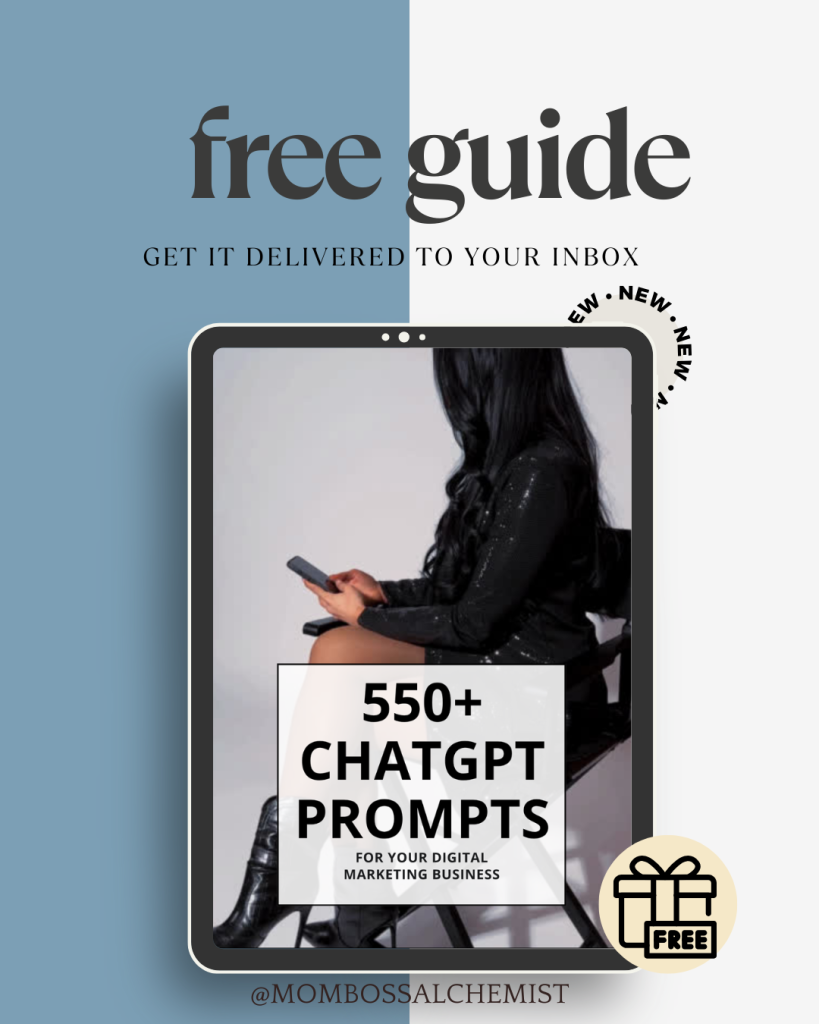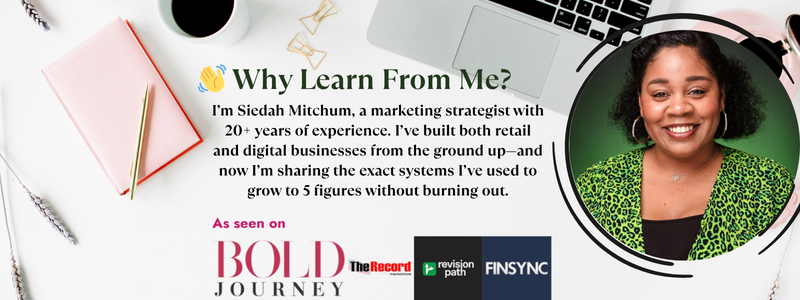
One of the biggest mistakes I see small business owners make is not knowing who they’re really talking to when creating content. You might post on Facebook or Instagram, but if you’re not clear on who your customer is, your message won’t land — and your sales will suffer.
The good news? Once you know exactly who you’re talking to, creating content becomes much easier. You stop guessing, and you start connecting.
Let’s walk through how to figure out your target audience and build a customer profile you can use to guide your marketing. I’ll use my own candle company, Her Love Collection, as an example.
Step 1: Ask the Right Questions
Your customer profile starts by asking yourself these questions:
- Who is most likely to buy my product?
- Where do they shop (online, local stores, trade shows)?
- What do they value most — price, quality, speed, uniqueness?
- What problem does my product solve for them?
- What frustrates them about other products in the market?
- Why would they choose me over someone else?
Pro tip: The goal here is not to say “everyone can buy my product.” Be specific!
Step 2: Build Your Customer Profile
Let’s put this into practice with Her Love Collection.
My Audience: metaphysical shops and bath/body stores
Their Goal: sell unique candles that smell amazing and attract repeat buyers
Their Problem: making candles themselves is time-consuming, messy, and inconsistent
My Solution: I save them time by providing wholesale and private label candles that are high-quality, unique, and stand out from competitors. My candles sell quickly, which means they can reorder often.
ChatGPT Prompt: “Act as a business strategist and help me create a detailed customer profile for my business. Ask me step-by-step questions about my product/service, goals, and the type of people I want to reach. Based on my answers, build a customer profile that includes demographics (age, gender, income, location), psychographics (values, lifestyle, personality), goals, pain points, buying motivations, and preferred communication channels. Present it in a clear, organized format I can use for marketing and content creation.”
That’s a clear customer profile: wholesale buyers who value time, uniqueness, and quick sales turnover.
Step 3: Use Prompts to Dive Deeper Into Your Customer’s World
Once you have a customer profile, you can use prompts like these to understand your customer even more:
- What keeps my customer up at night when it comes to their business?
- What words or phrases would they use to describe the “perfect” product in my niche?
- How do they define success (ex: more sales, loyal customers, less stress)?
- What kind of experience do they want to create for their customers?
- If they could wave a magic wand, what problem would they want solved instantly?
These prompts help you go deeper — beyond just demographics — and start speaking to your customer’s emotions and real business needs.
ChatGPT Prompt: Act as a marketing strategist. I want to identify my target audience for [insert your product/service]. Please ask me detailed questions about my business, goals, and ideal customers. Then, based on my answers, create a clear audience profile including demographics, interests, pain points, values, and buying behaviors. Also, suggest where I can find this audience online and the type of content that will connect with them.
👉 This way, ChatGPT won’t just give you an answer—it will guide you through a discovery process, ask you clarifying questions, and then build out your ideal audience persona.
Step 4: Write Content That Speaks Directly to Them
Here’s where most small business owners get stuck. Now that you know who your audience is, how do you write Facebook posts that resonate?
Here’s a Facebook content prompt you can use again and again:
“If my customer could overhear me talking about how my product makes their life easier or their business more successful, what would I say?”
For example, if I’m writing for Her Love Collection, my post might sound like this:
“Shop owners, I know your time is precious. Instead of learning how to make candles from scratch (and dealing with trial and error), imagine stocking shelves with candles that are already customer favorites. With Her Love Collection, you get unique crystal candles that not only smell amazing but also sell fast — so you can spend more time growing your business and less time worrying about inventory.”
Notice how this post speaks directly to the shop owner’s need for time, sales, and customer satisfaction — instead of just saying “buy my candles.”
Step 5: Repeat and Refine
Your customer profile isn’t a “set it and forget it.” Keep listening to your audience, asking questions, and noticing what posts or offers they respond to most. Over time, your content will become more natural, because you’ll know exactly what they want to hear.
Final Takeaway
Knowing your target audience is the foundation of content that connects. Without it, you’re guessing. With it, you’re writing content that feels like a one-on-one conversation.
Want help building your own customer profile? Drop a comment below with your business and I’ll send you 3 custom prompts to get started.








As a business owner, I appreciate this great guide to figure out my target audience. Very helpful tips to create a customer profile for future marketing.
This was such a helpful breakdown! I always hear about the importance of knowing your target audience, but your tips made it feel way more practical and actionable. I especially liked the part about tailoring content to their actual needs rather than just assumptions. Definitely something I’ll be applying to my own content strategy.